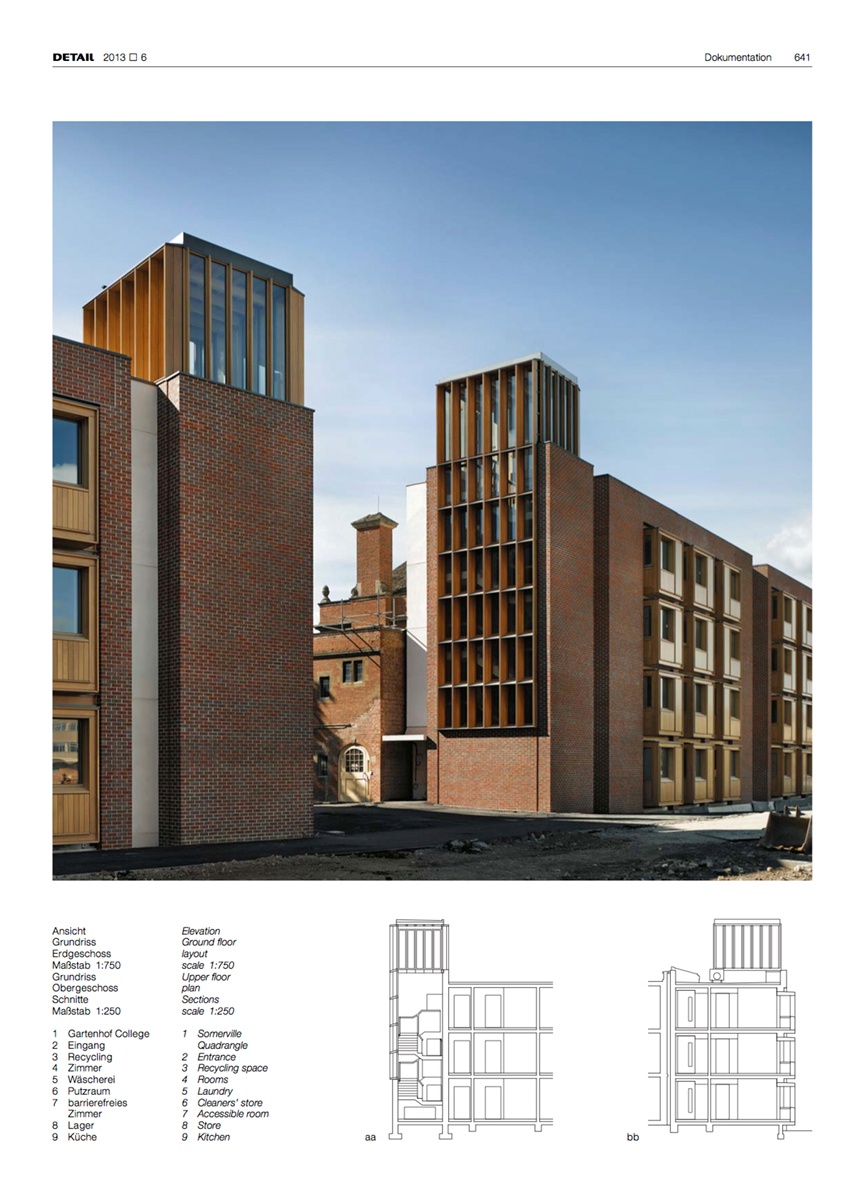Student Accommodation in Oxford - Detail
Issue 6
June 2013
Text Detail
Images Nick Kane
On a former hospital site north of Somerville College campus, new institute buildings are being developed for the university. The college was formerly oriented towards the south, but with the demolition of the clinic structures, an almost completely closed face was revealed. To realign Somerville to the future university centre by means of these new student dwellings, a 175-metre-long and 6-metre-wide strip of land was acquired along the northern boundary – just deep enough to accommodate a single row of rooms with an access corridor. Between the two sections of the development, the architects have created a new line of approach to the college from the north, thereby forming a framed view of Radcliffe Observatory from the quadrangle. In a later phase of the scheme, the housing will be linked with the existing buildings to the south.
The urban planning concept was based on an analysis of the surroundings. The staircase towers that mark the entrances act as points of orientation and are the sole vertical elements in a building fabric distinguished by its horizontality. The existing brick facades are articulated by wooden oriel windows, and in this respect, the architects have developed a modern version of a prevailing theme. The bay windows in the dwellings identify the individual rooms externally and allow the entry of sunlight. In the narrow lane and for the storey-height windows in the staircase towers, areas of glass and oak will mainly be used.
In view of the strict time schedule and the need to disturb studies as little as possible, a high degree of prefabrication was called for. In addition to the wooden oriel windows, developed on the basis of mock-ups, structural elements and entire sanitary cells were prefabricated. The stairs were conceived as a kind of 3D puzzle, using precast concrete elements, mainly with exposed surfaces. Load-bearing staircase walls are also in precast concrete with a brick facing skin internally.
